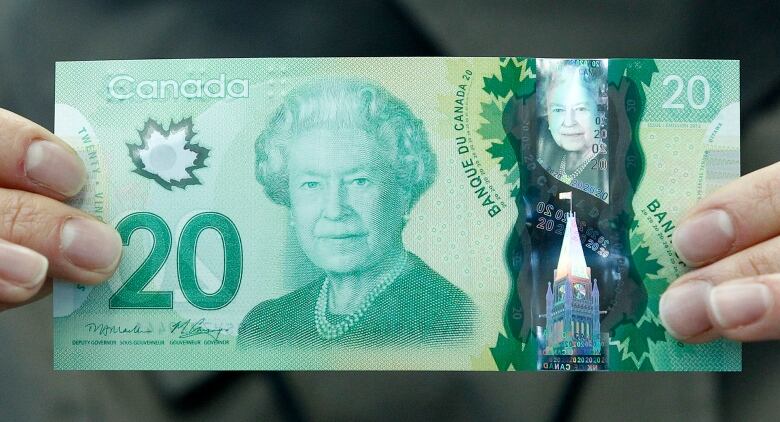Alberta Budget 2016: 5 ways it could affect your pocketbook
How the carbon tax, its offsetting rebates and other tax changes will affect Albertans

In the time it takes to read this sentence, Alberta's net financial position will have worsened by about $1,000.
That's assuming it took you about three seconds to read.
Each second of this fiscal year, the province expects to spend $1,620 while only bringing in $1,312 in revenue. That's a net loss of $308 every time the clock ticks.
- Alberta budget goes into the red to fight economic downturn
- Albertans don't need or want new carbon tax,says opposition leader
- 'This isn't going to fly,' says Nenshi on paying carbon tax on city vehicles
Add up all those ticks and, by March 31, 2017, we'll wind up with a $9.7-billion deficit. (The government is also factoring in a $700-million "risk adjustment" to account for fluctuations in the price of oil, adding up to what it projects to be a $10.4-billion total deficit.)
These are massive numbers, hard to wrap one's mind around.
But break it down and look at the details, and you'll find numerous ways in which this budget will impact your daily life.
1. Carbon tax Money out of your pocket
In likely the biggest change for all Albertans, the government is introducing what it describes as an "economy-wide" carbon levy, which means almost exactly what it sounds like.
Starting Jan.1, 2017, the levy will apply to purchases of fossil fuels that produce greenhouse-gas emissions when burned, at a rate of $20 per tonne of emitted carbon dioxide.
For gasoline, that means an extra 4.5 cents per litre at the pump. For diesel, it's 5.4 cents.

Propane will cost 3.1 cents more per litre, while the price of natural gas will see an increase of $1.01 per gigajoule.
All of these extra costs will increase by 50 per cent as of Jan. 1, 2018, when the carbon levy increases to $30 per tonne.
There are some exceptions, however.
Farmers won't have to pay the carbon levy on so-called "purple" fuel gasoline and diesel that has been marked with a special dye and already receives a nine-cent-per-litre exemption from provincial fuel tax.
Fuel purchased on-reserve by eligible First Nations members will also be excluded, consistent with existing exemptions.
Natural gas produced and consumed on site by conventional oil-and-gas producers will also be exempt, although that exemption is set to end on Jan. 1, 2023.
The levy won't apply to biofuels such as ethanol, biodiesel and biomethane, nor on any type of fuel sold for export.
Aircraft fuel burned on flights in and out of Alberta will also be exempt, as the province is "only taking responsibility for (greenhouse gas) emissions produced within its own jurisdiction," according to the budget documents.
2. Carbon tax Money into most of your pockets
All that extra tax adds up to hundreds of dollars per year for a typical family, but the government says most families will actually come out slightly ahead, thanks to carbon-tax rebates that will more than offset the increased cost for fuel.
The size of your rebate and whether you get a rebate at all depends on your net taxable income for the year.
Single adults earning below $47,500 will receive a $200 rebate in 2017. That amount decreases as you make more money, and those earning $51,250 or more will receive no rebate.

For families, including couples with no kids, the rebate starts at $300 and can go as high as $420 for a couple with four kids or a single parent with five kids.
Families with combined net incomes below $95,000 qualify for the full amount, and it phases out to zero as household incomes reach $100,000 for a couple, $101,500 for a couple with two kids, and $103,000 for a couple with four kids.
The payments begin on Jan. 1, 2017, and, like the carbon levy itself, they will increase by 50 per cent as of Jan. 1, 2018.
Households receiving annual rebates of $400 or more will get their payments every three months, while those receiving between $200 and $399 will see payments twice a year, and those receiving less than $200 will get one annual payment. No rebates will be issued for less than $100.
The government says 60 per cent of households in Alberta will receive a full rebate, and 66 per cent will receive at least a partial rebate.
The full rebates were set at an amount higher than what the government projects the average fuel-cost increase resulting from the carbon tax to be but, of course, your mileage may vary.
If you make a point of consuming less gasoline, natural gas, propane, and other fossil fuels, you will pay less in carbon tax but your rebate (if you qualify) will stay the same. Conversely, if you burn more than the average Albertan, you can expect to pay more but won't see any increase in your rebate.
3. More money for low and middle-income parents
If you have kids and your net household income is less than $41,220, you will qualify for hundreds maybe thousands of dollars under the new Alberta Child Benefit.
The maximum benefit for a family with one child is $1,100, and that increases to $2,750 for families with four or more children.
Families earning $25,500 or less will qualify for the maximum amount, with the payment decreasing with income to the $41,220 threshold, at which point eligibility ends.

The government is also expanding the Alberta Family Employment Tax Credit in this budget so that more families will qualify for it and the amount they receive will increase.
Families with one child will now see a maximum annual credit of $763, while families with four or more children can receive up to $2,012.
The credit decreases with income above $41,250, and reaches zero at about $77,000.
The new child benefit and changes to the family tax credit take effect in July and, together, the government expects they will provide about $340 million to 199,000 Alberta families, including 380,000 children.
That's an average of $1,700 per family.
4. Small business tax cut and investor tax credit
If you run a small business, you can expect to pay less tax and you may find investors a bit more willing to fund your enterprise.
The budget includes a reduction in the small-business tax rate to two per cent, down from its previous level of three per cent.
That puts Alberta on par with the small-business tax rate in Saskatchewan and just below British Columbia's rate of 2.5 per cent.
Only Manitoba has a lower rate for small businesses, at zero per cent.

The rate change in Alberta takes effect on Jan. 1, 2017, and, in its first full fiscal year, is projected to save small businesses in the province a total of $185 million.
The small-business income threshold is $500,000.
The budget also introduces a new tax credit for individuals or corporations that invest in eligible small- and medium-sized enterprises in the province.
The Alberta Investor Tax Credit is said to be worth $90 million over two years, but the government has yet to announce specific details about how it will work. That information will come "later this year," according to the budget documents.
5. The debt hangover
If you've read all the way from the beginning of the article to here, congratulations: You're a diligent consumer of news.
At an average reading speed, you've likely spent about six minutes getting to this point, which means the government has about $110,000 less than when you started the article.
The good news is: Alberta still has money in a contingency account to cover that.
The bad news is: Those reserves will be exhausted at some point later this year, and the government will have to start borrowing to pay its bills.
For the first time in more than two decades, the government expects it will need to borrow just to cover its operating expenses, some $5.4 billion in total.
That's on top of $5 billion in borrowing for capital expenses.
All told, the government's liabilities (including pensions) are expected to total $71 billion by the end of this fiscal year, up from $60 billion last year.
Against financial assets totalling $61 billion, that will put Alberta in a net-debt position of $10 billion by the end of this fiscal year, joining every other province on the red side of the ledger.
For the past 17 years, Alberta had been in the unique and enviable position of having more financial assets than liabilities.
How does this affect your pocketbook?
Well, the interest on the debt will come out of your taxes this year, but the debt itself isn't expected to start shrinking until 2024, according to Finance Minister Joe Ceci, unless the economy rebounds more quickly than is expected.
Ceci said it's his government's plan to move back to a balanced budget slowly by curbing spending growth while avoiding "brutal cuts" to front-line services.
He also ruled out raising government revenues faster by joining every other province and implementing a sales tax.
"Albertans don't want a sales tax," Ceci said.
"We will manage our way through this by reducing the cost of our operations."
Mobile app users, click here to follow our budgetliveblog.












_(720p).jpg)


 OFFICIAL HD MUSIC VIDEO.jpg)
.jpg)



























































































